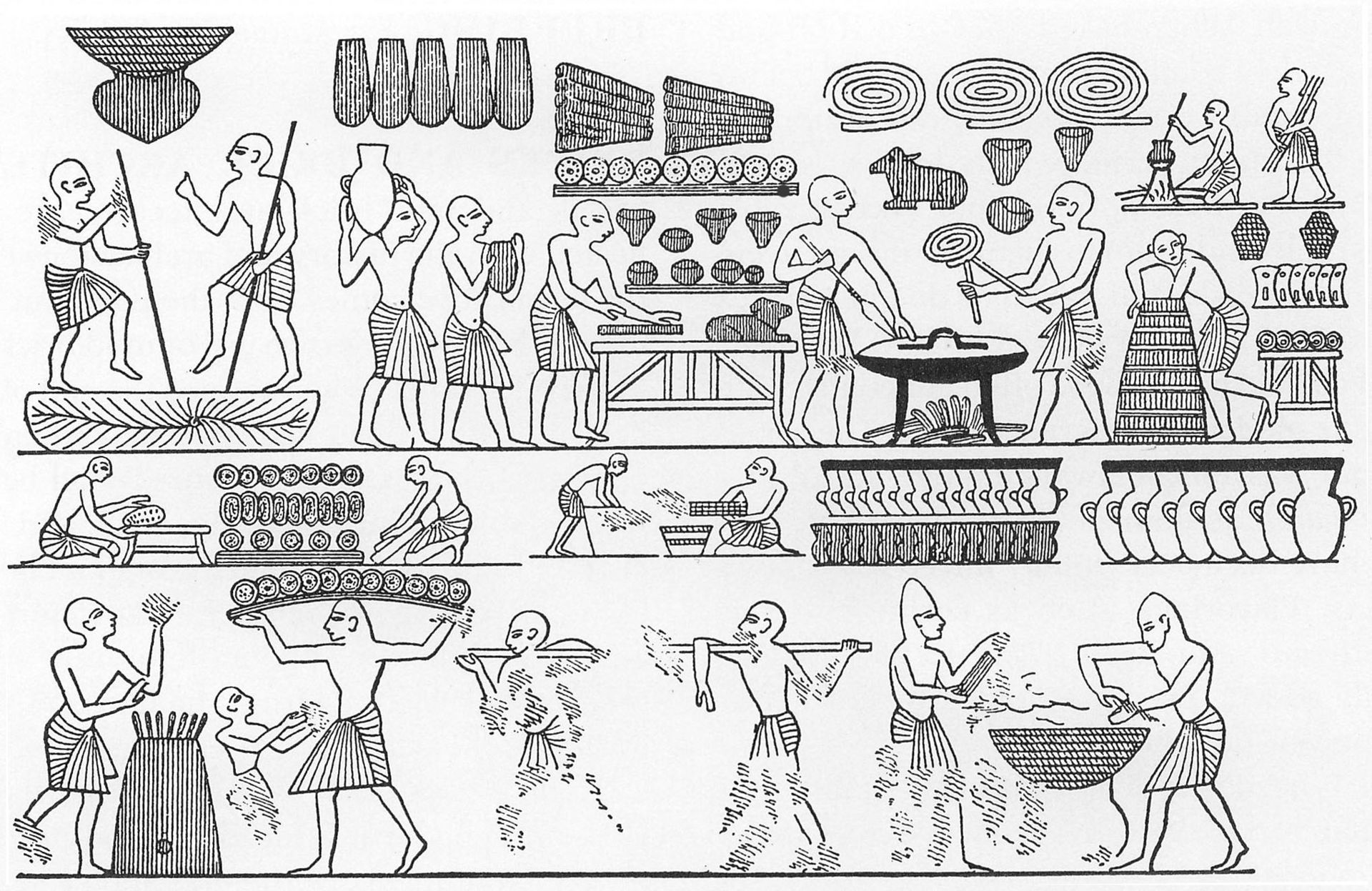title: “The Oldest Cookie Recipe” date: 2018-12-03 draft: false author: “Martin Fera (Text) Ralf Bliem (Video)” number: “3” type: “blog” postUrl: “http://biotop.co/xmascal/days/03" headervideo: “/03/CookieRecipe_540p.mp4” featured: “/img/blog/xmascal/03/RamsesIIIBakery_Upload.jpg” call: “The whole recipe can be found on our website. / Have a smell and taste ever taken you back in time? Read more tomorrow”
The baker can deliver sweet foods to you in a thousand forms, for the bee works for him. (M. V. Martialis, XIV, 222)
What would Christmas be like without cookies? The small portioned biscuits sweeten our everyday life, especially during the advent season. For some time now, eating them has not been about nutrition but about self-indulgence, which is regretted by some after the holidays. It was a very different story around 7000 years ago when people in Mesopotamia built the first agricultural settlements and in doing so, took the decisive step on the way to the world we live in today. The cultivation and processing of grain was one of the basic prerequisites for settlement, and it was hard-earned bread, literally, until the harvested grain could be used to make porridge, beer or bread for daily consumption. Our ancestors regularly suffered from malnutrition, and their skeletons show wear and tear from the monotonous grinding process of the grain to flour, one of the main ingredients for bakery. Even from these very early civilizations, such as the Sumerians or Egyptians, recipes of pastries sweetened with spices, fruits and honey have survived over the ages. These treats were probably reserved only for members of the highest social classes. The Romans already knew the profession of the confectioner, the Pistor Dulcarius, who made honey bakery for feast tables of the rich and for offerings. Ever since sweet cookies were introduced to more and more households during the 19th century, the number of recipes has greatly expanded. What is the “oldest cookie recipe” we know? A likely candidate is a recipe from Sumer from the 3rd dynasty of Ur (dating from around 4000 years before today) which can be derived from administrative texts found on cuneiform tablets (see graphic).
About the author
As an archaeologist Martin Fera has researched pharaonic graves in Sudan, bronze age saltmines in Hallstatt or viking burials in Norway. Currently, his research is focused on using data from landscape scans to better understand early iron age cultures in Europe. As an architect Ralf Bliem has a special interest in generative planing processes and modular design. He studied architecture at the UT Vienna and TU Berlin, also he worked at renowned architecture offices in Berlin and Vienna. Ralf is a co-founder of Biotop and at the moment he works with Biotop on the modular design of labs and some more interesting tasks.
Inda3 gug2 gu-la (“sweet cakes”)
Add 100 ml each of two good flours (emmer flour), 30 ml each of clarified butter, grated cheese and raisins and 100 ml each of finely chopped dates to a dough with a little water. Optionally some sourdough can be incorporated, so that the formed fruit breads become somewhat fluffier. Bake in embers (or in the oven at 200°) for 30 minutes. Good luck!
Further Reading:
- James C. Scott, Against the Grain: A Deep History of Earliest States. Yale University Press 2018. ISBN: 9780300240214 https://yalebooks.yale.edu/book/9780300240214/against-grain
- Hagan Brunke, Zur Rekonstruktion von Speisen in Sumer anhand administrativer Urkunden. In: G. Selz, K. Wagensonner (Hrsg.): The Empirical Dimension of Ancient Near Eastern Studies. Die empirische Dimension altorientalischer Forschungen (Wiener Offene Orientalistik 6), 2011, 375-399. https://www.academia.edu/32535176/Zur_Rekonstruktion_von_Speisen_in_Sumer_anhand_administrativer_Urkunden._In_G._Selz_K._Wagensonner_eds._The_Empirical_Dimension_of_Ancient_Near_Eastern_Studies._Die_empirische_Dimension_altorientalischer_Forschungen_Wiener_Offene_Orientalistik_6_2011_375-399
- Yvonne Yiu, “In the Orchard give me Honey!” Beekeeping and Sweet Cakes from Mesopotamia, in: Cahn’s Quarterly 2/2016, 10-11. https://files.artbutler.com/file/1335/74386d563c6e4b9d.pdf
- For those interested in trying out other ancient recipes: Robert Maier, Römisches Kochbuch; Rezepte für die moderne Küche. Reclam 2015. ISBN: 978-3-15-011019-5 https://www.reclam.de/detail/978-3-15-011019-5/Maier__Robert/Roemisches_Kochbuch


